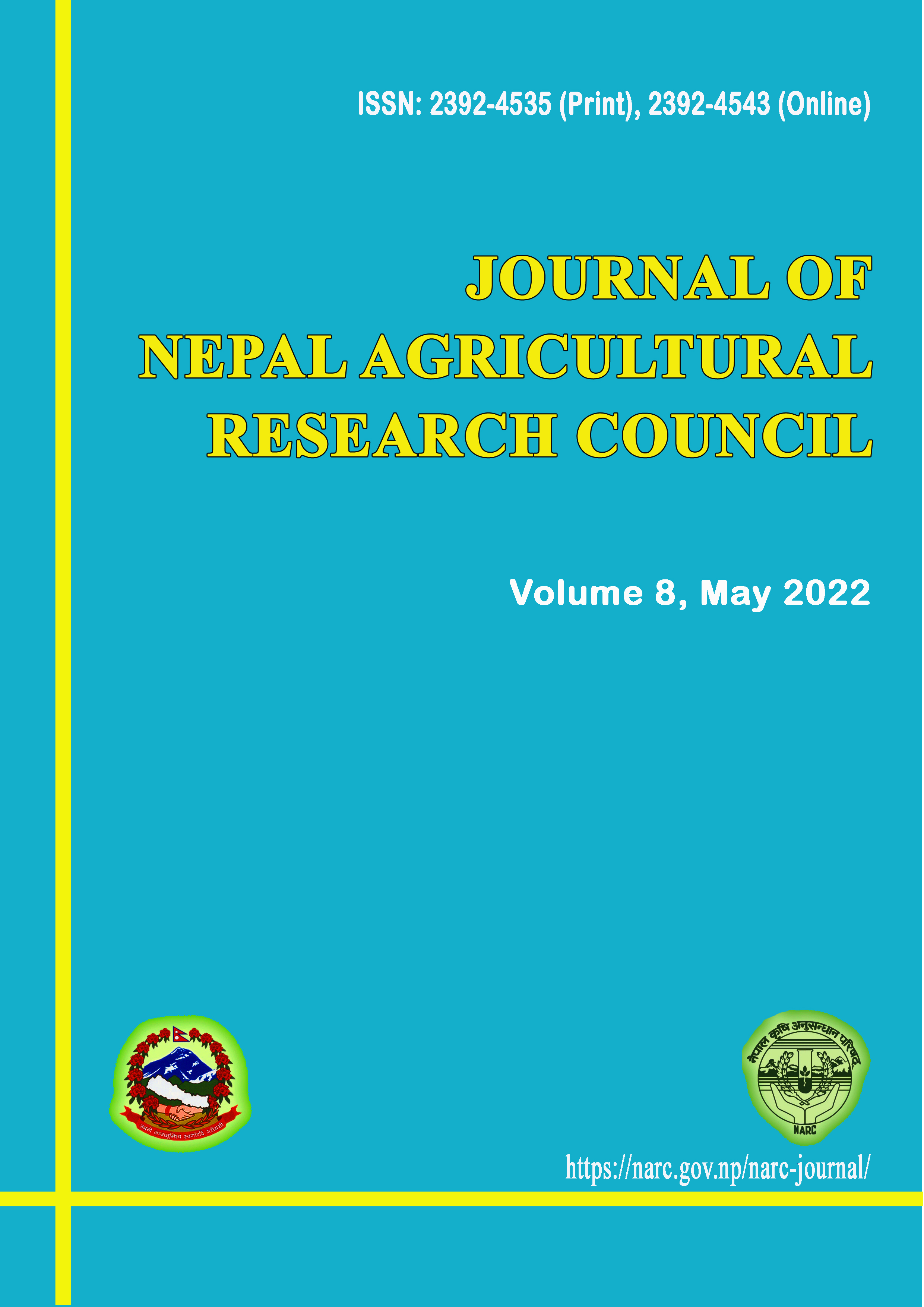Effect of Wrapping Materials and Maturity Stages on Postharvest Loss Reduction of Papaya
DOI:
https://doi.org/10.3126/jnarc.v8i.44811Keywords:
firmness, shelf life, total soluble solid, weight lossAbstract
Papaya fruits are vulnerable to high postharvest losses if harvesting and handling techniques are inappropriate. Therefore, an experiment was conducted in two consecutive years, 2019 and 2020, to assess the effects of wrapping materials and maturity stages on postharvest loss reduction of papaya stored at ambient condition. A factorial combination of four wrapping materials (brown paper, white paper, fiber bag, and control) and three maturity stages (MS2; few yellow streaks from base to stalk end of fruits, MS3; 1/2 ripe, and MS4; 3/4 ripe), using a completely randomized design (CRD) with three replications was used to carry out this experiment. The papaya fruits were evaluated for transportation weight loss, bruised fruit percent, physiological weight loss, decay percent, total soluble solids, firmness, and shelf life. The result revealed that wrapping materials significantly affected on the transportation weight loss, percent bruised fruit, decay percent, and shelf life. The stage of maturity had a significant effect on TSS and firmness of the fruit. However, the interaction of wrapping materials and maturity stages had a non-significant effect on all the parameters. Out of the four wrapping materials, brown paper wrapped fruits had the lowest bruised fruit (4.1%), the lowest decay (10.8%), and the highest shelf life (11.8 days), while MS2 showed the minimum bruised fruit (15.1%), decay (21.2%), and shelf life (12.8 days). Fruit harvested at MS2 wrapped with brown paper can reduce postharvest loss and improve shelf life of papaya.
Downloads

Downloads
Published
How to Cite
Issue
Section
License
Copyright (c) 2022 Nepal Agricultural Research Council

This work is licensed under a Creative Commons Attribution-NonCommercial 4.0 International License.
This license enables reusers to distribute, remix, adapt, and build upon the material in any medium or format for noncommercial purposes only, and only so long as attribution is given to the creator.
